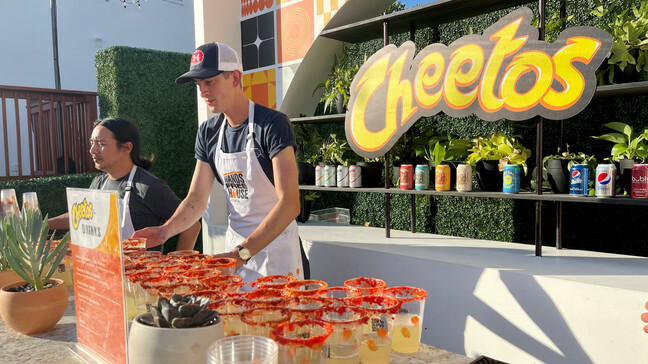After a three-year COVID hiatus, in-person industry events are finally back (at least for now).
Unsurprisingly, trends in experiential marketing look a bit different today than they did prior to the pandemic, with many 2022 industry events showcasing the latest and greatest in all things immersive. Having recently returned from one such event, SXSW in Austin, Texas, BCW’s Group Creative Director Ashley Kernitsky shares five of the most exciting trends consumers can expect to see in experiential marketing this year and beyond.
1. Meaningful Brand Partnerships
For better or worse, COVID seemed to make critical thinkers of us all. Many consumers have come to approach public initiatives with a sense of caution and skepticism and are more apt to recognize inauthenticity when they see it. But that doesn’t mean companies should altogether cease engagement with clever, thoughtful or meaningful partnerships. When done correctly, the effect can be awe-inspiring.


At SXSW, Cheeto’s "Hands-Free House,” a space equipped with Alexa-controlled, voice-operated devices that allowed visitors with Cheeto-dusted fingers to interact with any machine of their choosing, proved a case study in effective partnership. As a way of promoting the exciting new technologies at the festival, Cheetos’ partnership with Amazon was a clever way to position itself as a current, tech-forward company. That the experience was also entirely hands free appealed to germ-wary visitors, many of whom had not been at a festival for over three years.

2. The Endurance of the QR Code
While COVID may have sparked the revival of the QR, it looks like it’s here to stay. At SXSW, Paramount+ demonstrated that the QR code’s appeal is not simply limited to restaurant and bar menus.
As part of an effort to promote Halo, a new alien-centric television show, the streaming service launched 400 drones into the night sky, each of which came together to form a massive, hovering…QR code!
The display — 300 feet tall and 600 feet wide — was visible to the entire city of Austin, not just festival goers, exponentially multiplying its appeal. And, yes, the QR code was scannable and linked to the series’ trailer. Needless to say, it was one of the more talked about and innovative activations and serves as a reminder of the everlasting domain of the QR code.


3. NFT Hype is Real
An NFT, short for non-fungible token, is essentially a collectible digital asset you can buy and sell. Brands, artists and companies ranging from Porsche to Dolly Parton to Blockchain, hosted NFT activations at SXSW, with many selling NFT products to visitors enticed by the opportunity to own something entirely unique. Whether NFTs are simply a fad or are the future of property ownership, it’s safe to say they’re on track to become an important part of the experiential ecosystem in the years to come.

4. From Storytelling to Story-Living
Given the immense hype around experiential activations, it’s easy to forget the specific purpose that they serve, which is to bring a brand story to life, to transform audiences from passive listeners (or consumers) into active participants.
This can be achieved a multitude of ways, but the best example of an activation that truly empowered its visitors to engage with the art on display was one put on by Meow Wolf, a creative collective known for its immersive and visually wild art attractions, and Spatial, an audio simulation company that creates virtual soundscapes. Without getting too detailed, the experience was multi-sensory, with a powerful fusion of sound and art that elicited an emotional response from each and every participant.

5. Return to Play
After a three-year hiatus, festival-goers yearned for shared experiences and were ready to embrace an environment that felt playful and celebratory. The activations at SXSW proved a chance to get silly and creative. Brands have shifted their focus from quantity to quality of engagement, and it seems as though they’re committed to crafting experiences that foster a two-way connection. Although the element of silliness and play is bound to wear off eventually, the novelty of social engagements has inspired activations to embrace joy—and consumers love it.
you might also like
Explore allNorth America
BCW PRide Publishes the 2023 Client Guide
North America
BCW Global Marks Mental Health Awareness Month with Robust Internal Initiatives & Resources
North America
Keeping Clients Up-to-Speed in Digital
North America
The Undeniable Link Between Climate Health and Human Health
